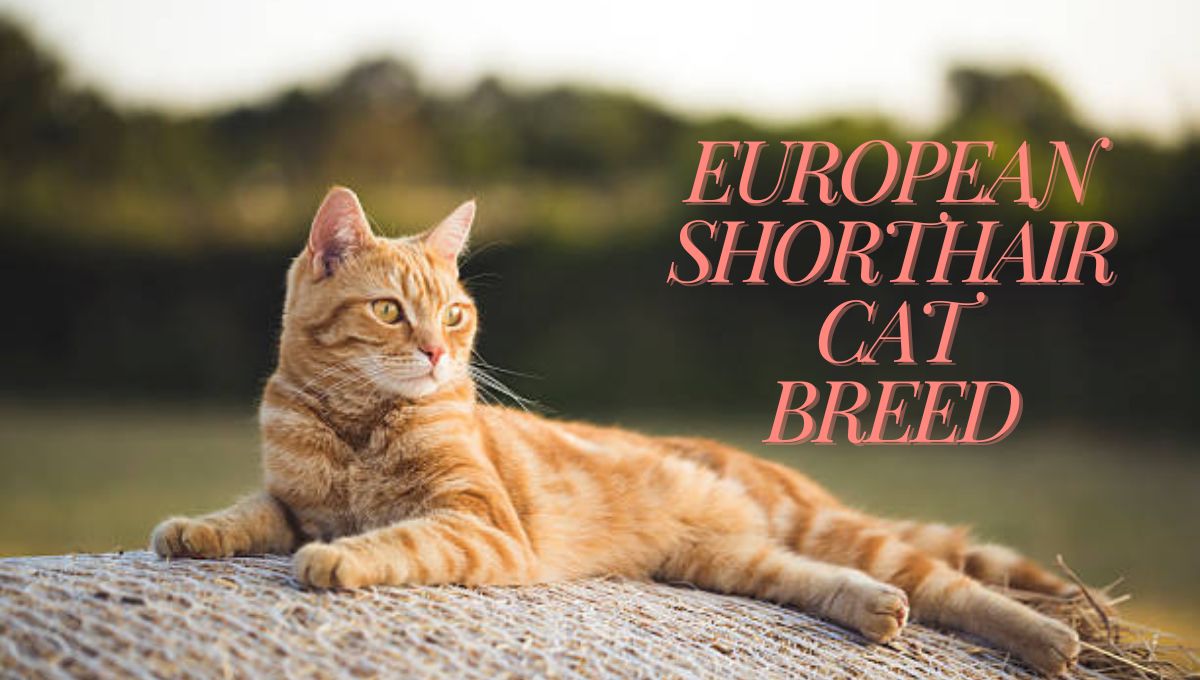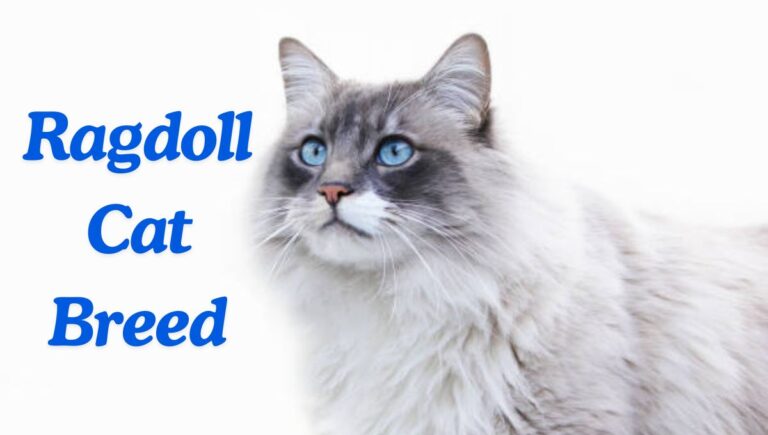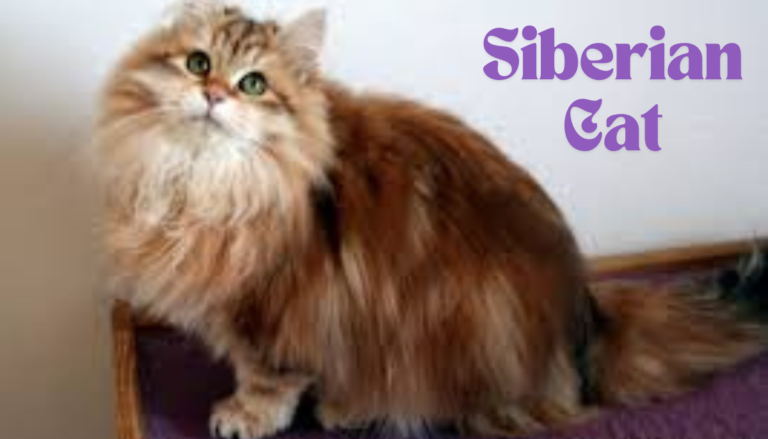European Shorthair Cat Breed
Introduction :
The European Shorthair, often referred to simply as the “European,” is a breed steeped in history and tradition. Recognized for its robust health, natural adaptability, and charming personality, this breed is celebrated across Europe and beyond. The European Shorthair is the pedigreed version of the common domestic cat that has roamed the continent for centuries.
The breed’s name, European Shorthair, signifies its widespread presence and long-standing heritage across Europe. Unlike many other cat breeds that were developed through selective breeding for specific traits, the European Shorthair evolved naturally, adapting to various environments and climates throughout the continent.
This natural evolution has contributed to its strong genetic health and diverse appearance.
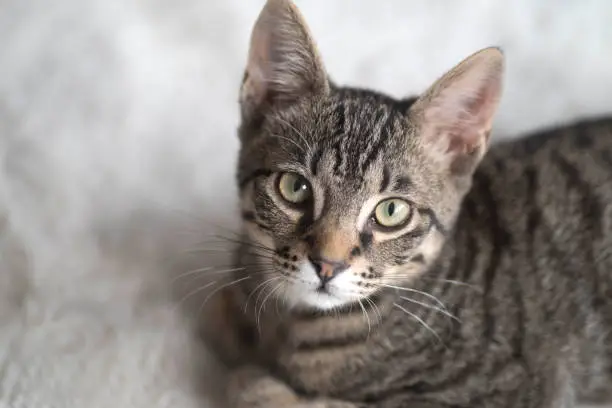
European Shorthairs come in a wide array of colors and patterns, from solid colors like black and white to tabby, bicolor, and tricolor variations. This diversity makes each cat unique in appearance. These cats typically have a sturdy, muscular body with a round face and medium-sized ears.
Their eyes can be various shades, often matching their coat colors. Thanks to their natural evolution, European Shorthairs tend to be free of many genetic diseases that affect other purebred cats. They are known for their excellent health and longevity, often living well into their teens.
European Shorthairs are known for their adaptability to different living conditions. Whether in a rural countryside or a bustling urban environment, these cats thrive and adjust well. While they enjoy human companionship and can be very affectionate, European Shorthairs also maintain a level of independence. They are not overly demanding of attention but appreciate interaction and play.
Historically, these cats were valued for their hunting prowess. Even today, European Shorthairs retain strong hunting instincts, making them excellent at controlling pests. European Shorthairs are intelligent and curious creatures.
They enjoy exploring their surroundings and can be easily trained to perform tricks or follow commands. In summary, the European Shorthair is a breed that combines beauty, health, and a delightful personality. Its rich heritage and natural evolution make it a unique and cherished breed among cat enthusiasts.
Table of Contents
I. Origin and History of European Shorthair Cat Breed :
Discuss the Breed’s Origins and Historical Significance :
- Origins and Historical Significance:
- The European Shorthair’s history dates back thousands of years, tracing its origins to the Roman Empire. The Romans are believed to have brought these cats to Europe from Egypt, where they were initially domesticated.
- These cats played a crucial role in controlling the rodent population, which protected food supplies and helped prevent the spread of diseases. This historical role as efficient hunters has greatly influenced their development and traits.
- Breeds Involved in Formation:
- The European Shorthair is a naturally occurring breed and did not result from specific crossbreeding programs. Its characteristics developed over centuries through natural selection, favoring traits that allowed these cats to thrive in various environments.
Geographical Region of Origin :
- Region of Origin:
- The European Shorthair originated across various regions in Europe. While the breed can be found throughout the continent, it is particularly prevalent in Northern and Eastern Europe.
- The diverse climates and environments in these regions played a significant role in shaping the European Shorthair’s adaptable nature and robust health.
Influence on Modern Characteristics :
- Impact of Origin on Characteristics:
- The European Shorthair’s natural evolution in diverse and sometimes harsh environments has resulted in a breed known for its resilience and adaptability.
- Their historical role as hunters has contributed to their keen hunting instincts and muscular build, which are prominent traits today.
- The breed’s varied geographical spread has also led to a wide range of coat colors and patterns, making each European Shorthair unique in appearance.
Folklore and Legends :
- Folklore and Legends:
- Various myths and legends surround the European Shorthair, often highlighting its revered status as a bringer of good luck and protector of homes.
- In some European cultures, it was believed that having a European Shorthair in the house could ward off evil spirits and bring prosperity.
- Legends also tell of European Shorthairs serving aboard ships, protecting valuable cargo from rodents, and earning a place in maritime lore as trusty companions of sailors.
In summary, the European Shorthair’s origins and history are deeply intertwined with the history of Europe itself. From their early days in the Roman Empire to their evolution across various European regions, these cats have developed traits that make them resilient, adaptable, and unique. Folklore and legends further enrich the breed’s heritage, highlighting its longstanding significance in human society.
II. Physical Characteristic of European Shorthair Cats :
| Height | Typically ranges from 9 to 11 inches at the shoulder. |
| Weight | Adult European Shorthairs usually weigh between 8 to 15 pounds, with males generally being larger than females. |
| Life Span | European Shorthairs are known for their longevity, often living between 14 to 20 years with proper care. |
| Good With | These cats are adaptable and generally good with children, other cats, and even dogs, making them excellent companions in multi-pet households. |
| Temperament | European Shorthairs have a balanced temperament. They are friendly and affectionate but also maintain a level of independence. They are known for being calm, patient, and social when they choose to be. |
| Intelligence | Highly intelligent, European Shorthairs are curious and enjoy mental stimulation. They can be trained to perform tricks and are quick learners. |
| Shedding Amount | Moderate shedders, European Shorthairs require regular grooming to manage shedding, especially during seasonal changes. |
| Grooming | Their short coat requires minimal grooming. Weekly brushing is typically sufficient to keep their coat healthy and reduce shedding. |
| Exercise Needs | These cats are naturally active and enjoy having space to explore. Regular play sessions and interactive toys help meet their exercise needs. |
| Energy Level | European Shorthairs have a moderate to high energy level. They are playful and enjoy activities that stimulate their hunting instincts. |
| Meowing Level | Generally, European Shorthairs are not overly vocal. They communicate in a soft and pleasant manner, though they can be expressive when they need attention or food. |
| Drool amount | Drooling is uncommon in European Shorthairs. Any excessive drooling should be checked by a veterinarian as it could indicate health issues. |
| Coat Length/Texture | Their coat is short, dense, and glossy. It has a smooth texture that is pleasant to touch and easy to maintain. |
| Colors | European Shorthairs come in a wide variety of colors, including black, white, blue, red, cream, and more. Eye color often corresponds with coat color, ranging from green to amber and blue. |
| Patterns | The breed displays a range of patterns, such as solid, tabby (striped, spotted, or classic), bicolor, tricolor, and shaded. This diversity adds to the breed’s unique and varied appearance. |
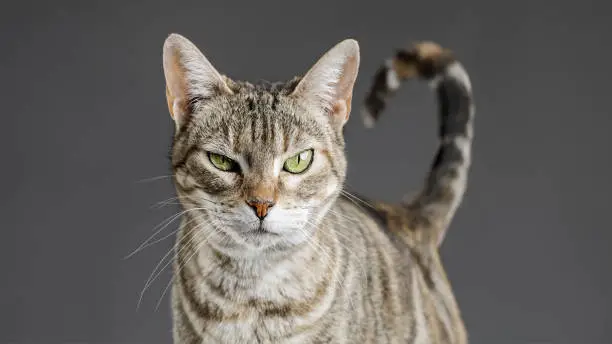
Detailed Physical Characteristics of the European Shorthair Cat Breed :
Size :
- Males:
- Height: 10 to 11 inches at the shoulder
- Weight: 10 to 15 pounds
- Females:
- Height: 9 to 10 inches at the shoulder
- Weight: 8 to 12 pounds
Coat Type and Color Variations :
- Coat Texture:
- The coat of a European Shorthair is short, dense, and glossy. It has a smooth and sleek texture that is pleasant to the touch and relatively low-maintenance.
- Coat Length:
- The coat is uniformly short across the body, contributing to its easy grooming requirements.
- Color Variations:
- European Shorthairs exhibit a broad spectrum of coat colors, including but not limited to:
- Solid Colors: Black, white, blue (gray), red, cream
- Tabby Patterns: Classic (blotched), mackerel (striped), spotted
- Bicolor: Combinations of two colors, typically with white
- Tricolor: Calico (typically seen in females, featuring white, black, and red or cream)
- Shaded: Colors with a gradient effect, such as shaded silver or shaded blue
- European Shorthairs exhibit a broad spectrum of coat colors, including but not limited to:
- Common Patterns:
- Solid
- Tabby (striped, spotted, or classic)
- Bicolor
- Tricolor
- Shaded
Distinctive Features :
- Ear Shape:
- European Shorthairs have medium-sized, rounded ears that are set wide apart on the head. The ears have a slight tilt forward, contributing to the breed’s alert and friendly expression.
- Tail Characteristics:
- The tail is of medium length, proportionate to the body, and tapers to a rounded tip. It is covered with the same short, dense fur as the rest of the body.
- Unique Physical Traits:
- Head Shape: The European Shorthair has a rounded head with full cheeks, giving it a gentle and approachable appearance.
- Eye Color: The eyes are large, round, and expressive. Eye color can vary widely, often correlating with coat color, and includes shades of green, blue, and amber.
- Body Build: They have a sturdy, muscular build that reflects their historical role as hunters. Their strong legs and broad chest contribute to their overall robust and agile appearance.
These distinctive features, along with their wide range of color and pattern variations, make the European Shorthair a unique and recognizable breed. Their balanced and symmetrical physique, combined with their adaptable and resilient nature, sets them apart from other cat breeds.
III. Temperament and Personality of European Shorthair Cats :
Typical Temperament and Personality Traits :
General Demeanor:
- European Shorthairs are known for their balanced and adaptable nature. They exhibit a mix of independence and affection, making them well-suited for various living environments.
- These cats are generally calm and composed, yet they have moments of playful energy and curiosity. They are not typically prone to anxiety or excessive nervousness, contributing to their easygoing temperament.
Friendliness and Sociability:
- European Shorthairs are friendly and sociable cats, although they may take some time to warm up to new people or changes in their environment. Once comfortable, they can be very affectionate and enjoy human companionship.
- They tend to get along well with children and other pets, including dogs and other cats. Their social nature makes them excellent family pets.
- These cats are not overly demanding of attention, making them suitable for both busy households and quieter environments.
Common Behavioral Traits :
Positive Traits:
- Affectionate: While they enjoy their independence, European Shorthairs are also known for their loving nature. They appreciate being petted and often seek out their owners for cuddle time.
- Intelligent: These cats are highly intelligent and enjoy mental stimulation. They are quick learners and can be trained to perform tricks or follow commands.
- Playful: European Shorthairs have a playful side, especially when they have toys that mimic prey. Interactive play sessions can be a great way to bond with them.
- Adaptable: Their natural adaptability makes them comfortable in various living situations, whether in a bustling city apartment or a quiet rural home.
Challenging Traits:
- Independent Streak: While their independence can be a positive trait, it may sometimes come across as aloofness. They might prefer alone time and may not always seek constant interaction.
- Territorial Behavior: European Shorthairs can be territorial, particularly with other cats. Proper introductions and gradual acclimatization to new pets can help mitigate this issue.
- Hunting Instincts: Their strong hunting instincts can lead to behaviors like chasing small animals or birds. This trait should be managed, especially in households with smaller pets.
Managing and Addressing Breed-Specific Behavioral Issues :
Independence:
- Respect their need for alone time. Provide a safe and comfortable space where they can retreat and relax without disturbances.
- Ensure they have sufficient mental and physical stimulation to prevent boredom. Interactive toys and puzzle feeders can be effective.
Territorial Behavior:
- Introduce new pets gradually. Allow them to become accustomed to each other’s scents before face-to-face meetings.
- Use positive reinforcement to reward calm and non-aggressive behavior around other pets.
Hunting Instincts:
- Provide plenty of play opportunities that mimic hunting, such as feather wands and laser pointers, to satisfy their predatory instincts.
- Supervise outdoor time or consider a secure outdoor enclosure to keep them safe and prevent them from hunting wildlife.
In summary, the European Shorthair’s temperament and personality make it a well-rounded and adaptable breed. Understanding and respecting their independent nature, while providing ample opportunities for play and social interaction, can help manage any challenging behaviors and foster a strong, affectionate bond with these charming cats.
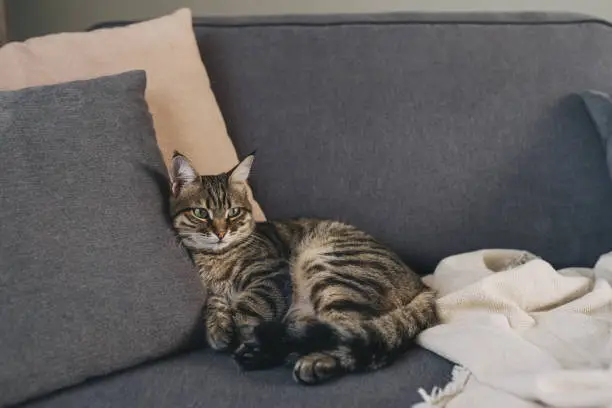
IV. Care and Maintenance of European Shorthair Cat Breed :
Grooming Needs :
- Coat Maintenance:
- Brushing: Brush their short, dense coat weekly to remove loose hairs and reduce shedding. During seasonal changes, more frequent brushing may be needed.
- Bathing: Generally, European Shorthairs do not require frequent baths. Occasional bathing is sufficient, using a cat-specific shampoo if necessary.
- Nail Trimming:
- Trim their nails every 2-4 weeks to prevent overgrowth and reduce the risk of scratches.
- Dental Care:
- Regularly brush their teeth with a cat-specific toothpaste to prevent dental issues. Dental treats and a healthy diet can also aid in maintaining oral health.
- Ear and Eye Care:
- Check their ears weekly for dirt, wax buildup, or signs of infection. Clean gently with a vet-recommended ear cleaner.
- Wipe their eyes with a damp cloth to remove any discharge or debris.
Health Consideration :
- Regular Veterinary Check-ups:
- Schedule annual veterinary visits for vaccinations, dental cleanings, and overall health assessments. Older cats or those with health concerns may require more frequent visits.
- Common Health Issues:
- European Shorthairs are generally healthy but can be prone to common feline issues like dental disease, obesity, and urinary tract problems.
- Regular monitoring and early detection of any health issues can ensure timely treatment and management.
- Parasite Prevention:
- Use vet-recommended flea, tick, and worm preventatives regularly, especially if your cat spends time outdoors.
Nutrition :
- Balanced Diet:
- Provide a high-quality, balanced diet that meets their nutritional needs. This can include dry kibble, wet food, or a combination of both.
- Ensure the food is appropriate for their life stage (kitten, adult, senior) and any specific health requirements.
- Portion Control:
- Follow feeding guidelines to avoid overfeeding and obesity. Measure their food portions and adjust based on their activity level and weight.
- Fresh Water:
- Ensure they have access to fresh, clean water at all times. Consider using a water fountain to encourage hydration.
Exercise :
- Daily Play:
- Engage in interactive play sessions daily to provide mental and physical stimulation. Toys that mimic prey, such as feather wands and laser pointers, are particularly effective.
- Scratching Posts and Climbing Trees:
- Provide scratching posts and cat trees to satisfy their natural scratching and climbing instincts. This helps keep their claws healthy and prevents damage to furniture.
- Safe Outdoor Access:
- If possible, provide a safe outdoor enclosure or supervised outdoor time to allow them to explore and exercise in a secure environment.
- Interactive Toys and Puzzles:
- Offer a variety of toys and puzzle feeders to keep them entertained and mentally stimulated when you are not around.
By following these care and maintenance guidelines, you can help ensure that your European Shorthair remains healthy, happy, and well-cared-for throughout their life.
V. Suitability of European Shorthair Cats :
Compatibility with Children and Other Animals :
Interactions with Children:
- European Shorthairs are generally good with children due to their balanced and friendly temperament. They are patient and tolerant, making them suitable companions for families with kids.
- They enjoy playing and can be quite affectionate, though they also appreciate having their own space. Teaching children how to interact gently and respectfully with the cat will foster a positive relationship.
Tolerance for Other Pets:
- European Shorthairs are adaptable and can coexist well with other pets, including cats and dogs, especially when introduced properly.
- Their social nature allows them to adjust to multi-pet households, though individual personalities and previous experiences can influence their behavior.
Special Considerations for Multi-Pet Households :
Introducing the Breed to Existing Pets:
- Gradual Introductions: When introducing a European Shorthair to existing pets, gradual introductions are crucial. Start by keeping them in separate rooms and allowing them to get used to each other’s scent through closed doors.
- Controlled Meetings: Arrange controlled meetings in a neutral space, closely monitoring interactions to ensure they are positive. Use positive reinforcement to reward calm and friendly behavior.
- Supervised Interactions: Continue to supervise interactions until you are confident that the animals are comfortable and can coexist peacefully.
- Patience and Time: Be patient, as some animals may take longer to adjust. Allow them to set the pace of their interactions.
Environmental Needs :
Space Requirements:
- European Shorthairs are adaptable and do not require a large amount of space. They can thrive in both apartments and larger homes, provided they have opportunities for physical and mental stimulation.
- Ensuring they have vertical space, such as cat trees or shelves, can help satisfy their climbing instincts and provide exercise.
Special Environment:
- These cats do not have specific environmental needs but do appreciate a stable and enriched environment. Provide a variety of toys, scratching posts, and cozy resting spots to keep them entertained and comfortable.
Temperature:
- European Shorthairs can adapt to a range of temperatures but prefer a moderate indoor climate. Avoid exposing them to extreme cold or heat. Ensure they have a warm place to rest in colder weather and a cool spot during hot periods.
Settling into Your Home Environment:
- European Shorthairs settle well into home environments where they receive consistent care, attention, and enrichment. They enjoy a balance of playtime, affection, and alone time.
- Creating a routine for feeding, play, and rest can help them feel secure and content in their new home.
In conclusion, the European Shorthair is a versatile and adaptable breed that fits well into family settings and multi-pet households. With proper introductions and a stable environment, they can become loving and engaging companions. Providing them with mental and physical stimulation, along with a comfortable living space, will ensure they thrive and bring joy to their family.
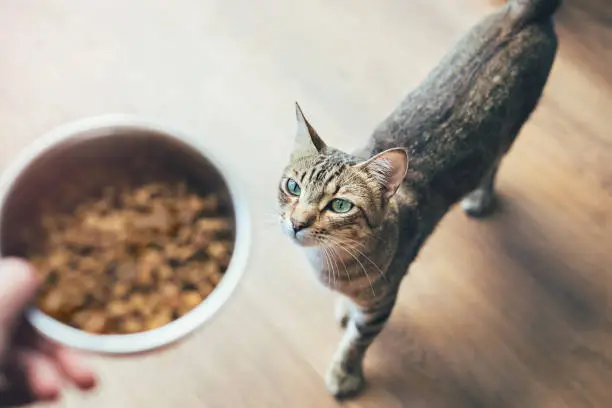
VI. Adoption and Breeder Consideration of European Shorthair Cat Breed :
Encouragement for Adoption from Shelters or Rescue Organizations :
Benefits of Adopting:
- Saving a Life: Adopting a cat from a shelter or rescue organization provides a loving home to a cat in need, potentially saving its life.
- Supporting Animal Welfare: Adoption helps reduce the number of homeless pets and supports organizations dedicated to animal welfare.
- Cost-Effective: Adoption fees are generally lower than purchasing from breeders and often include initial veterinary care such as vaccinations, spaying/neutering, and microchipping.
- Variety: Shelters often have cats of various ages, colors, and temperaments, allowing adopters to find a cat that matches their lifestyle and preferences.
Guidance on Selecting a Reputable Breeder :
Importance of Ethical Breeding Practices:
- Health Screenings: Reputable breeders prioritize the health of their cats by performing genetic screenings and regular veterinary checks to ensure the cats are free from common hereditary diseases.
- Ethical Treatment: Ethical breeders provide a clean, healthy, and stimulating environment for their cats. They avoid overbreeding and ensure that their cats are well-socialized and cared for.
- Transparency: A good breeder is transparent about their breeding practices, willingly shares health records, and allows potential buyers to visit their facility to meet the cats and see their living conditions.
Selecting a Reputable Breeder:
- Research: Look for breeders with positive reviews and memberships in recognized cat breeding associations, such as The International Cat Association (TICA) or the Cat Fanciers’ Association (CFA).
- Ask Questions: Inquire about the breeder’s experience, breeding practices, health guarantees, and the specific needs of the European Shorthair.
- Visit the Breeder: If possible, visit the breeder’s facility to see the conditions in which the cats are raised and to meet the kittens’ parents.
Cost Considerations and Potential Adoption Fees :
Adoption Costs:
- Shelter Adoption Fees: Typically range from $50 to $150, depending on the organization. This fee often includes spaying/neutering, vaccinations, and microchipping.
- Additional Costs: Initial setup costs for adopting a cat can include supplies like a litter box, scratching posts, toys, food, and a bed, totaling around $100 to $200.
Purchasing from a Breeder:
- Purebred Cost: European Shorthair kittens from reputable breeders can range from $500 to $1,500 or more, depending on the breeder’s reputation, the kitten’s lineage, and demand.
- Health Screenings and Guarantees: Higher costs often reflect the breeder’s investment in health screenings, high-quality care, and guarantees provided for the kitten’s health.
- Initial Veterinary Care: Ensure that the cost includes initial vaccinations, health checks, and any other early veterinary care.
Long-Term Financial Considerations:
- Ongoing Costs: Regular expenses for food, litter, toys, grooming supplies, and routine veterinary care can add up to $500 to $1,000 per year.
- Unexpected Medical Costs: Consider pet insurance or a savings plan to cover potential medical emergencies, which can be expensive without coverage.
In summary, whether choosing to adopt from a shelter or purchase from a reputable breeder, prospective European Shorthair owners should prioritize the cat’s health and well-being. Adopting from shelters offers the dual benefit of providing a home to a cat in need and supporting animal welfare, while purchasing from ethical breeders ensures a healthy, well-socialized pet. Understanding the financial aspects involved helps in making an informed and responsible decision.
VII. Conclusion
The European Shorthair is a robust and adaptable breed, celebrated for its natural evolution and diverse heritage. Originating from the common domestic cats of Europe, this breed is known for its health, longevity, and wide array of coat colors and patterns. European Shorthairs are medium-sized cats with a muscular build, round face, and expressive eyes that vary in color. Their coat is short, dense, and glossy, requiring minimal grooming.
In terms of temperament, European Shorthairs strike a balance between independence and affection. They are friendly, social, and good with children and other pets, making them excellent companions for families and multi-pet households. These cats are intelligent, curious, and playful, requiring regular mental and physical stimulation to stay happy and healthy. They are known for their calm demeanor and adaptability to various living environments, from apartments to larger homes.
Responsible ownership is crucial for ensuring the well-being of a European Shorthair. Prospective owners should consider the breed’s needs for regular grooming, proper nutrition, and adequate exercise. Regular veterinary check-ups and preventive care are essential for maintaining their health. Providing an enriched environment with plenty of opportunities for play and exploration is key to their mental and physical well-being.

Whether adopting from a shelter or purchasing from a reputable breeder, it is important to prioritize ethical practices and the cat’s health. Adoption offers the opportunity to give a loving home to a cat in need, while buying from a reputable breeder ensures a healthy, well-socialized pet. Financial considerations, including initial setup costs and ongoing expenses, should be carefully evaluated to ensure you are prepared for the commitment of pet ownership.
In conclusion, the European Shorthair is a delightful breed that brings joy and companionship to any home. By understanding and meeting their needs, owners can ensure a fulfilling and rewarding relationship with their feline friend. Responsible ownership and proper care are paramount to providing a happy and healthy life for these charming cats.
FAQ about European Shorthair Cat Breed :
Are European Shorthairs good with children and other pets?
Yes, European Shorthairs are generally good with children and other pets. They are sociable, tolerant, and enjoy the company of both humans and animals.
How long do European Shorthairs typically live?
With proper care, European Shorthairs can live between 14 to 20 years, making them a long-lived breed.
Are there specific health concerns associated with European Shorthairs?
European Shorthairs are generally healthy cats but can be prone to common feline health issues such as dental disease, obesity, and urinary tract problems. Regular veterinary check-ups are essential for maintaining their health.
How much does a European Shorthair cost?
Adoption fees for European Shorthairs from shelters or rescue organizations typically range from $50 to $150. Purchasing a kitten from a reputable breeder can range from $500 to $1500 or more, depending on factors such as lineage, breed quality, and location.
Are European Shorthairs suitable for first-time cat owners?
Yes, European Shorthairs can be suitable for first-time cat owners due to their friendly and adaptable nature. However, it is essential for owners to research and understand their care needs and be committed to providing proper care and attention.

